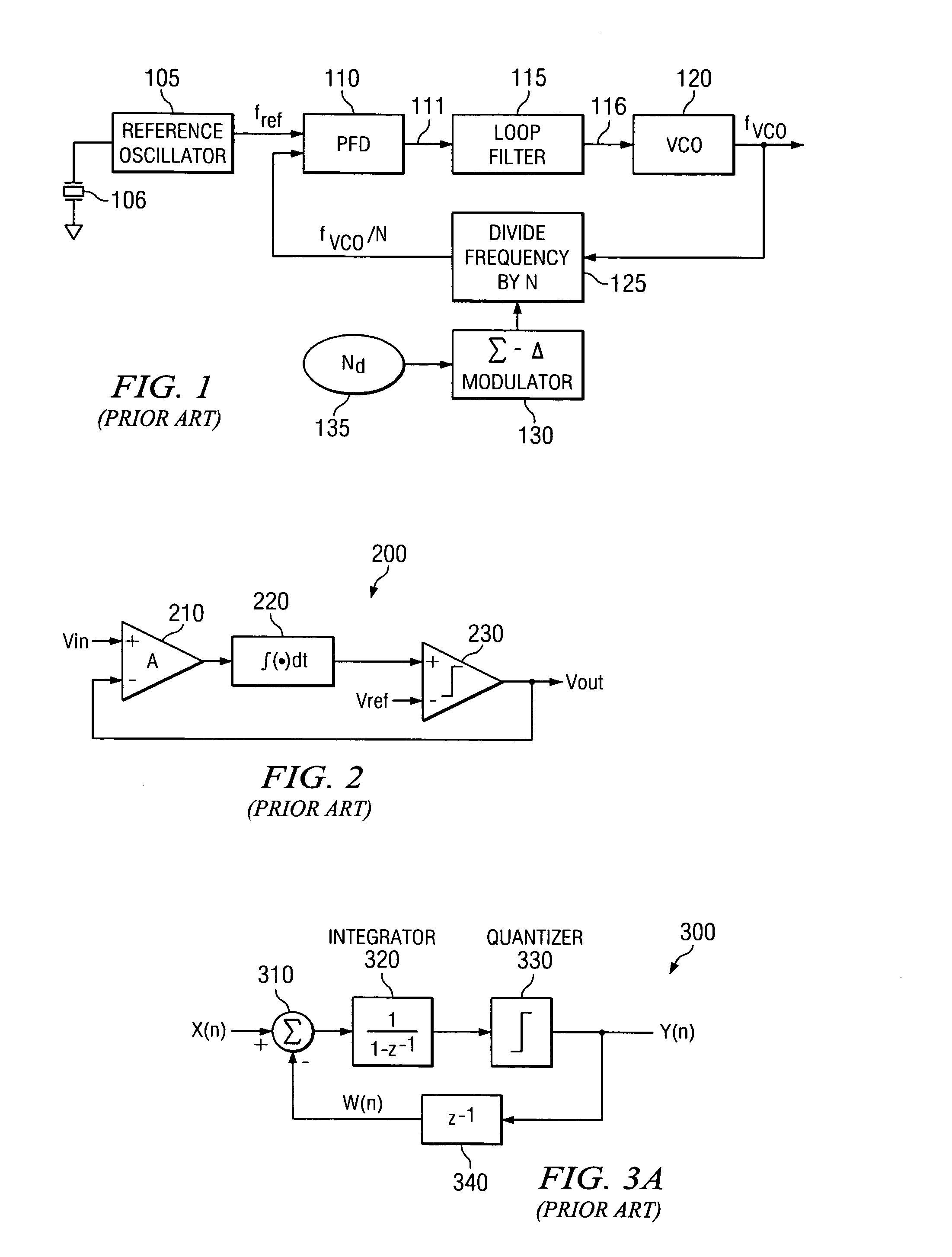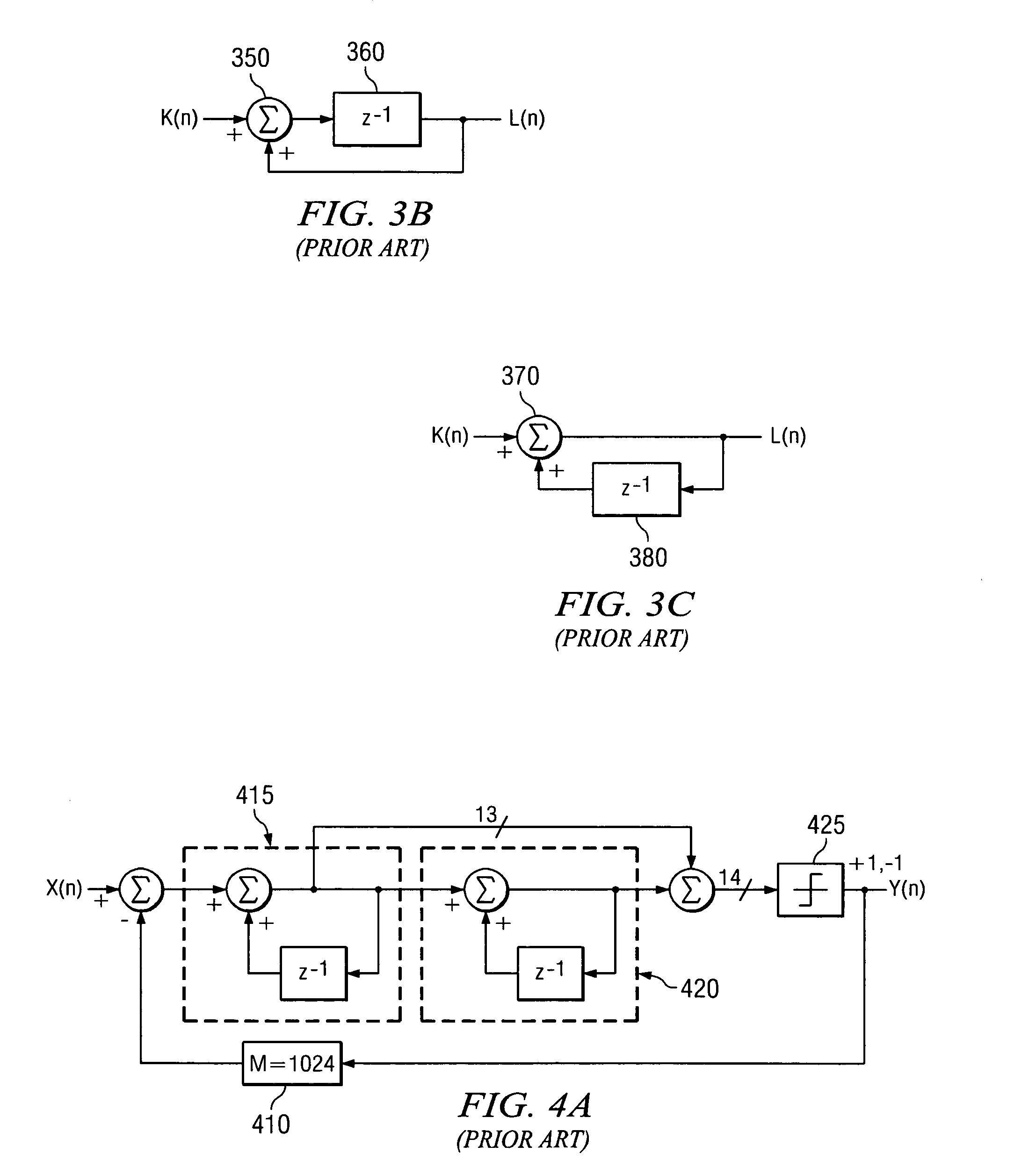Reduced area digital sigma-delta modulator
reduced area technology, applied in the field of implementing a digital sigma-delta modulator, can solve the problems of increasing system cost, increasing digital circuit cost, and reducing battery li
- Summary
- Abstract
- Description
- Claims
- Application Information
AI Technical Summary
Benefits of technology
Problems solved by technology
Method used
Image
Examples
Embodiment Construction
[0030]The making and using of the presently preferred embodiments are discussed in detail below. It should be appreciated, however, that the present invention provides many applicable inventive concepts that can be embodied in a wide variety of specific contexts. The specific embodiments discussed are merely illustrative of specific ways to make and use the invention, and do not limit the scope of the invention.
[0031]Embodiments of the present invention will be described with respect to preferred embodiments in a specific context, namely an apparatus and method using a sigma-delta modulator that can produce a digital output signal with reduced bit width from a digital input signal with minimal die area and low power dissipation, or produce a digital output signal from an analog input signal with minimal die area and low power dissipation. However, the use of this specific context is for illustrative purposes and does not limit the scope of the invention or the appended claims.
[0032]...
PUM
 Login to View More
Login to View More Abstract
Description
Claims
Application Information
 Login to View More
Login to View More - R&D
- Intellectual Property
- Life Sciences
- Materials
- Tech Scout
- Unparalleled Data Quality
- Higher Quality Content
- 60% Fewer Hallucinations
Browse by: Latest US Patents, China's latest patents, Technical Efficacy Thesaurus, Application Domain, Technology Topic, Popular Technical Reports.
© 2025 PatSnap. All rights reserved.Legal|Privacy policy|Modern Slavery Act Transparency Statement|Sitemap|About US| Contact US: help@patsnap.com



